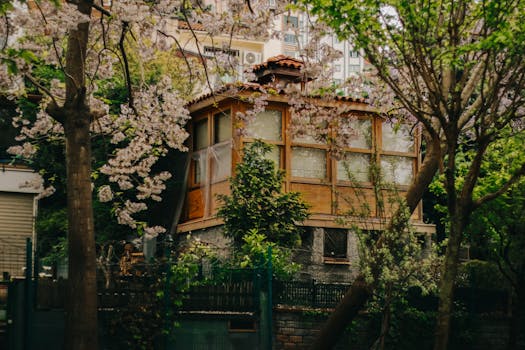
Urban Green Spaces: The Future of Outdoor Living in European Cities by 2025
Focus Keyword: Urban Green Spaces
Urban Green Spaces are becoming increasingly important in European cities as they provide a sustainable and healthy environment for citizens to live, work, and relax. By 2025, these green spaces will play a crucial role in shaping the future of outdoor living in European cities. In this article, we will explore the benefits of urban green spaces, their current state in European cities, and the future developments that will make them an integral part of urban planning.
Benefits of Urban Green Spaces
Urban green spaces offer numerous benefits to both the environment and the citizens. Some of the most significant advantages include:
- Improved air quality: Green spaces help to absorb pollutants and particulate matter, reducing the negative impact on human health.
- Increased biodiversity: Urban green spaces provide a habitat for various plant and animal species, supporting local ecosystems and promoting biodiversity.
- Climate regulation: Green spaces help to regulate the urban microclimate, reducing the urban heat island effect and mitigating the impacts of climate change.
- Recreation and leisure: Urban green spaces provide opportunities for recreation, socialization, and relaxation, improving the overall quality of life for citizens.
Current State of Urban Green Spaces in European Cities
European cities have made significant progress in incorporating urban green spaces into their planning and development. Many cities have implemented initiatives to increase the amount of green space, such as:
- Green roofs and walls: Cities like Paris and Berlin have incorporated green roofs and walls into their building codes, reducing stormwater runoff and improving air quality.
- Urban parks and gardens: Cities like London and Amsterdam have created extensive networks of urban parks and gardens, providing citizens with access to green spaces for recreation and relaxation.
- Green corridors: Cities like Vienna and Zurich have established green corridors, connecting urban green spaces and promoting biodiversity.
Future Developments in Urban Green Spaces
By 2025, urban green spaces will continue to play a vital role in shaping the future of outdoor living in European cities. Some of the future developments that will make urban green spaces an integral part of urban planning include:
- Incorporating green infrastructure into urban planning: Cities will prioritize green infrastructure, such as green roofs, walls, and corridors, to reduce the urban heat island effect and improve air quality.
- Implementing smart green space management: Cities will use technology, such as sensors and data analytics, to optimize green space management, reducing maintenance costs and improving the overall efficiency of green spaces.
- Increasing community engagement: Cities will engage with citizens to promote the use and maintenance of urban green spaces, fostering a sense of community and ownership.
Conclusion
Urban Green Spaces are the future of outdoor living in European cities. By 2025, these green spaces will be an integral part of urban planning, providing a sustainable and healthy environment for citizens to live, work, and relax. As European cities continue to develop and grow, it is essential to prioritize the creation and maintenance of urban green spaces, ensuring a high quality of life for citizens and promoting a sustainable future.





